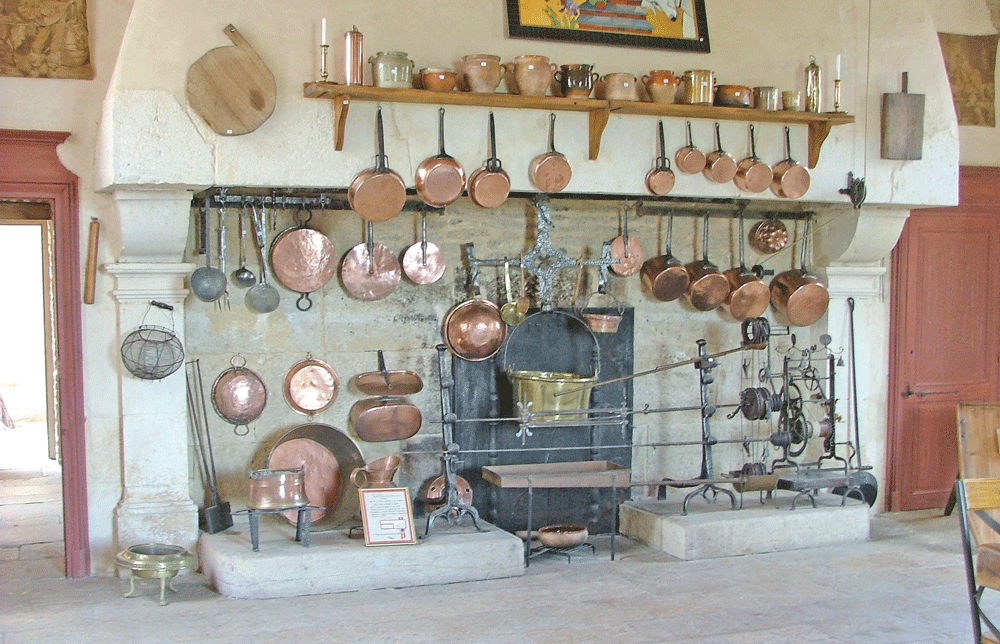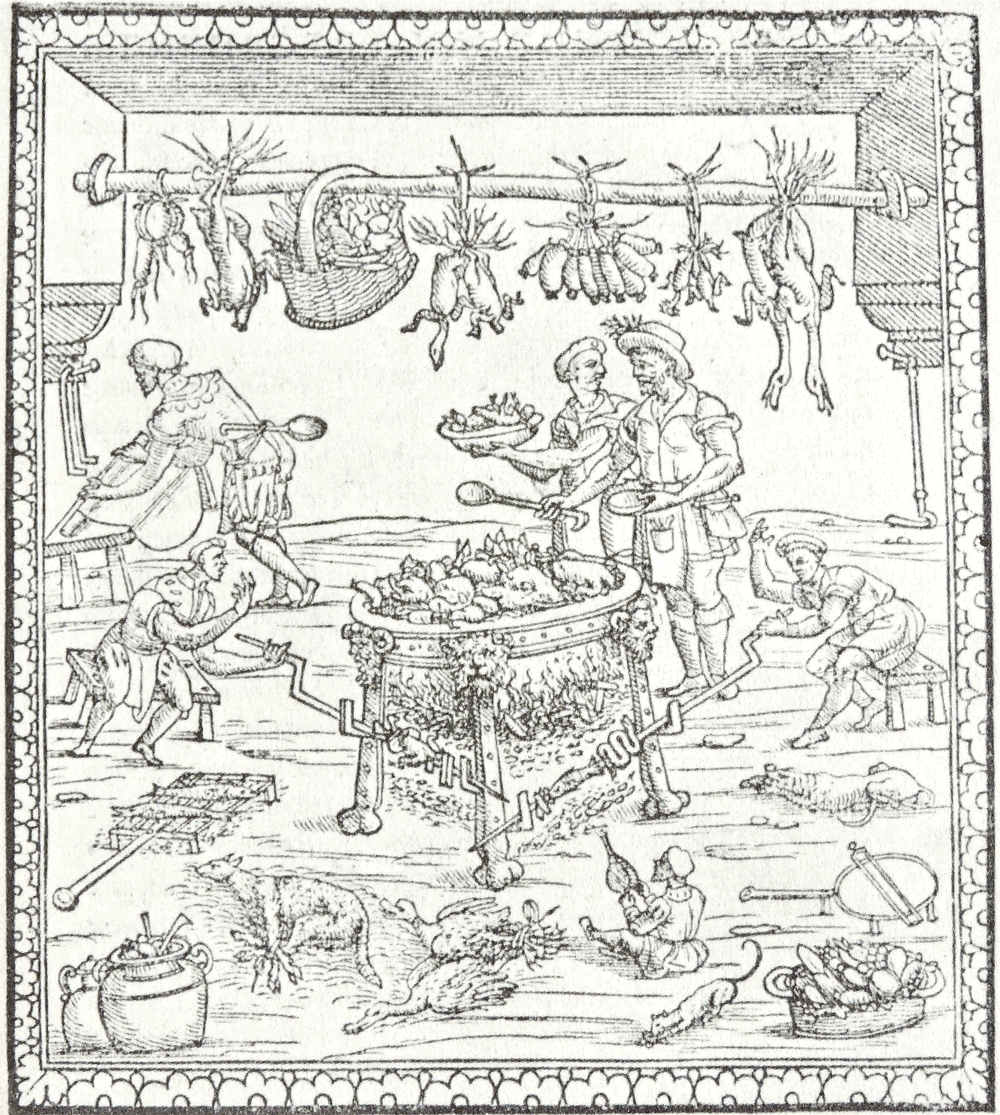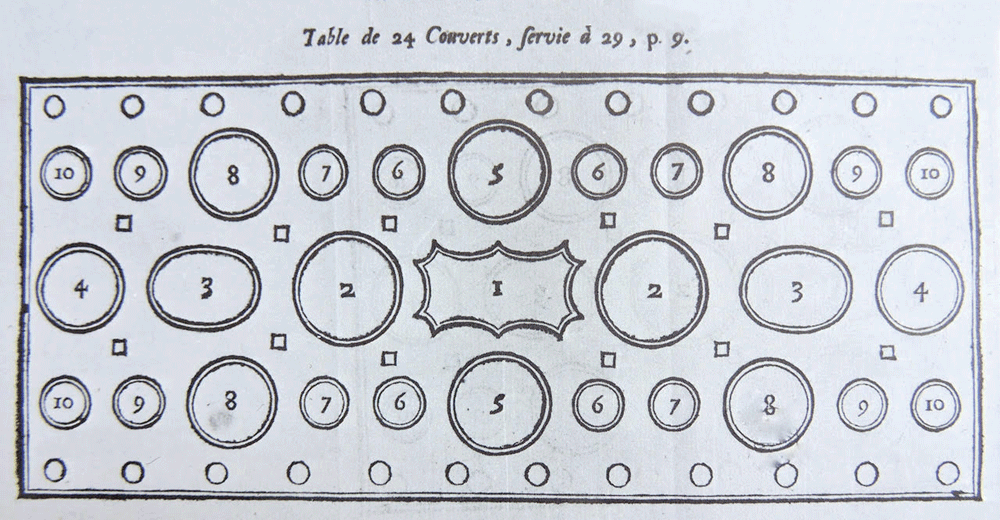Then & There: Dining Like the Sun King

In the late 1500s, the forests around the village of Versailles were known for their abundance of game. It had not yet become fashionable and whenever royalty hunted in the region, they took accommodations at the inn. King Louis XIII erected a hunting lodge there in 1623-24, which he later replaced with a chateau. About 1660, Louis XIV, the Sun King, decided that it should become the seat of power for France, reflecting all of its glory.

The main kitchen which does not exist today at Versailles was located about a quarter-of-a-mile from the palace and food was conveyed in wagons designed specifically for the purpose. There were smaller kitchens within the palace for the final stages of cooking and the arrangement for presentation. This served the king and other high ranking courtiers, who kept their own tables, with some seating nearly 40 people at a meal. The queen and her entourage kept similar tables leaving thousands of lesser courtiers to fend for themselves.
Unless it was a special banquet or festival the king would dine within his private chambers. Dinner for the king known as the “Grand Couvert” was served at 10 p.m. The king might dine alone or have a retinue of guests. In either case, there was also an audience of observers taking their pleasure in watching the king eat. And the Sun King did like to eat. As noted by his sister-in-law, “He could eat four plates of soup, a whole pheasant, a partridge, a large plate of salad, two slices of ham, mutton au jus with garlic, a plate of pastry, all followed by fruit and hard-boiled eggs.”

Food was served a la francaise whereby three to eight, or more, food choices per course were set upon the table at the same time. Each choice, in serving bowls or platters, would be placed in neatly repeating locations along the table, so that the diners would not have far to reach (or make a request for assistance) in selecting what to put on their plates. It was something like “family style,” but incredibly more elaborate. The first course was left on the table throughout the meal. Subsequent courses were removed when finished, making way for the selections for the next course to be arranged along the table. In 2009, Dom Perignon hosted a dinner at Versailles for 40 guests that replicated a dinner for Louis XIV. It took a year to plan and accomplish what the Sun King’s cooks did
every night.

in 1739.
The first course was three hors d’oeuvres (a royal ballotine of pheasant, deep-sea oysters and lobster aspic chaud-froid) and four soups, including a beef madrilene with gold leaf spangles and a pureed chestnut soup with truffles. The main course followed and the guests chose from scallops with oyster liquor, wild duck, hare stew, roast beef with smoked eel and wild salmon on fish-shaped blocks of salt. The third course was several salads, hard-boiled eggs, iced cheese and a morel souffle. The last course was fruit and, because Versailles would not allow flaming, real candles, served with edible, chocolate candles.
Some of the foods were chosen with historic connotations. Salmon was considered a “royal bird” and salt was such a luxury that the tax upon it represented some six per cent of the royal revenues.
The Dom Perignon was downed as in Louis’ time, when glasses were not allowed on the table. Instead, a glass was presented on a silver tray by a waiter and it had to be finished before returning it to the tray.
“Sante” and “bon appetit!”
By Richard Hooper.
This article first appeared in the september 2018 Issue.








